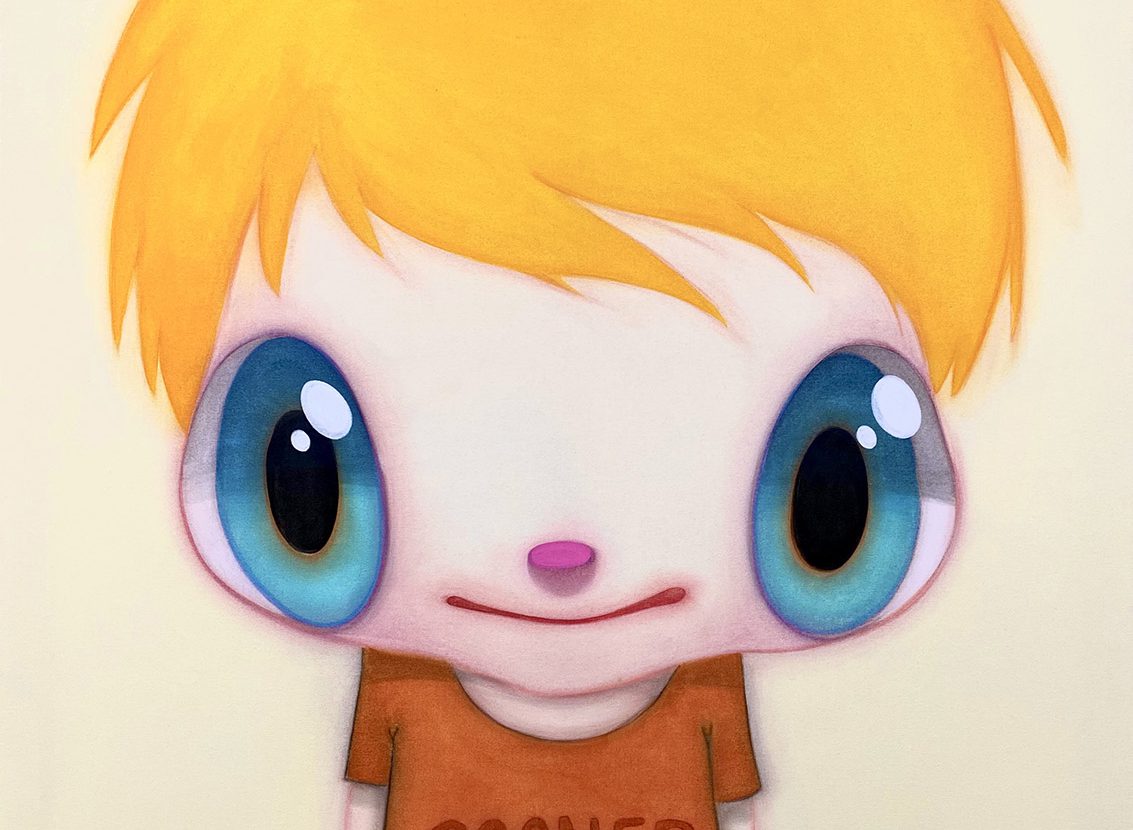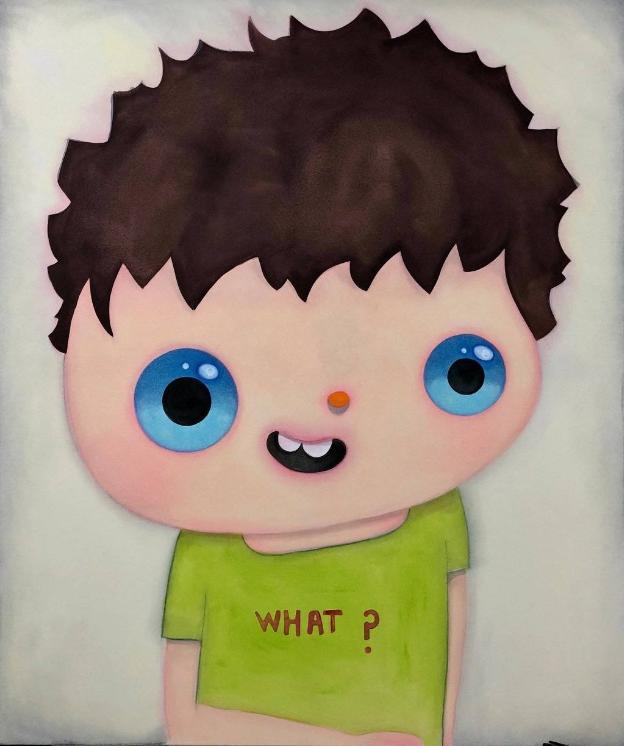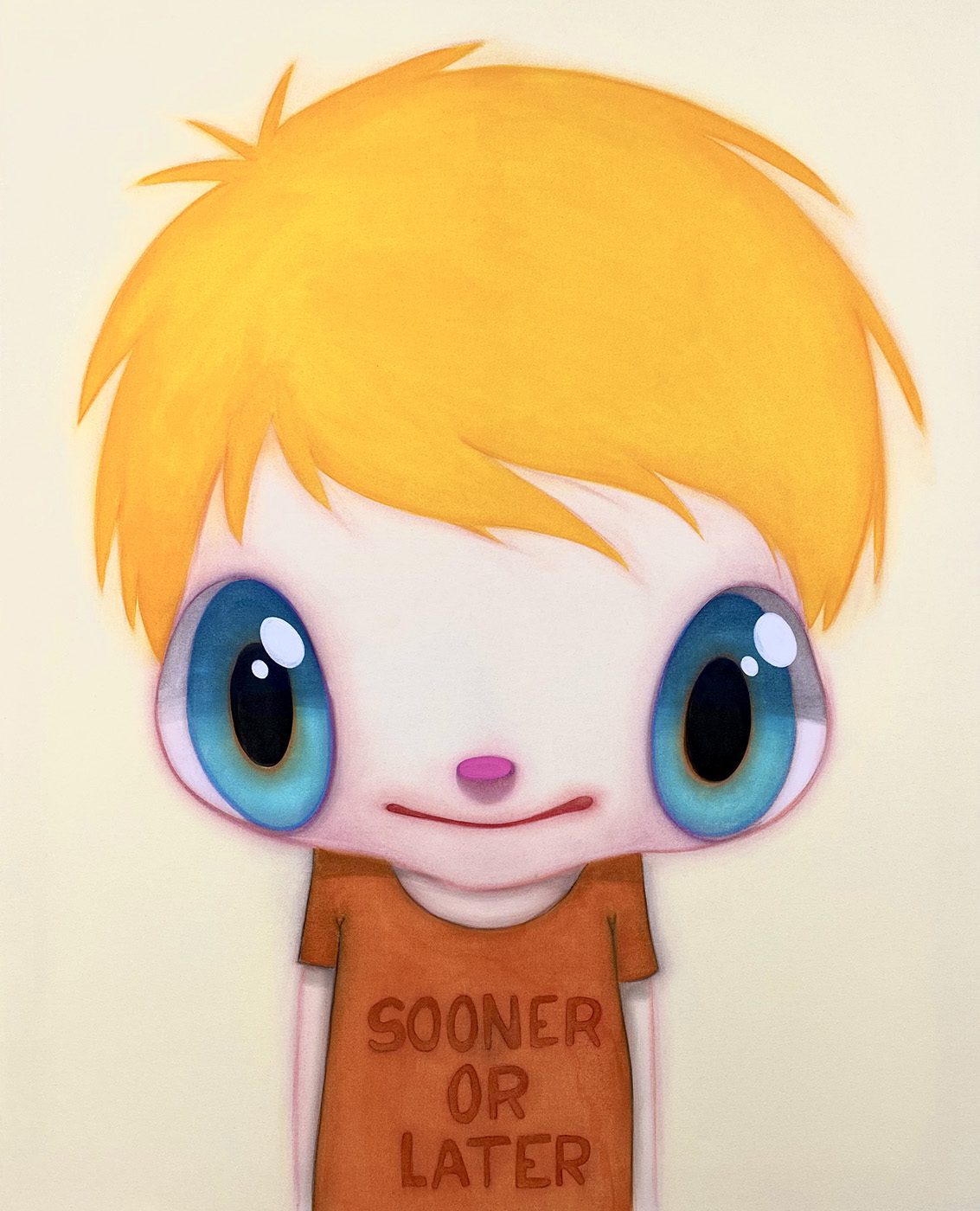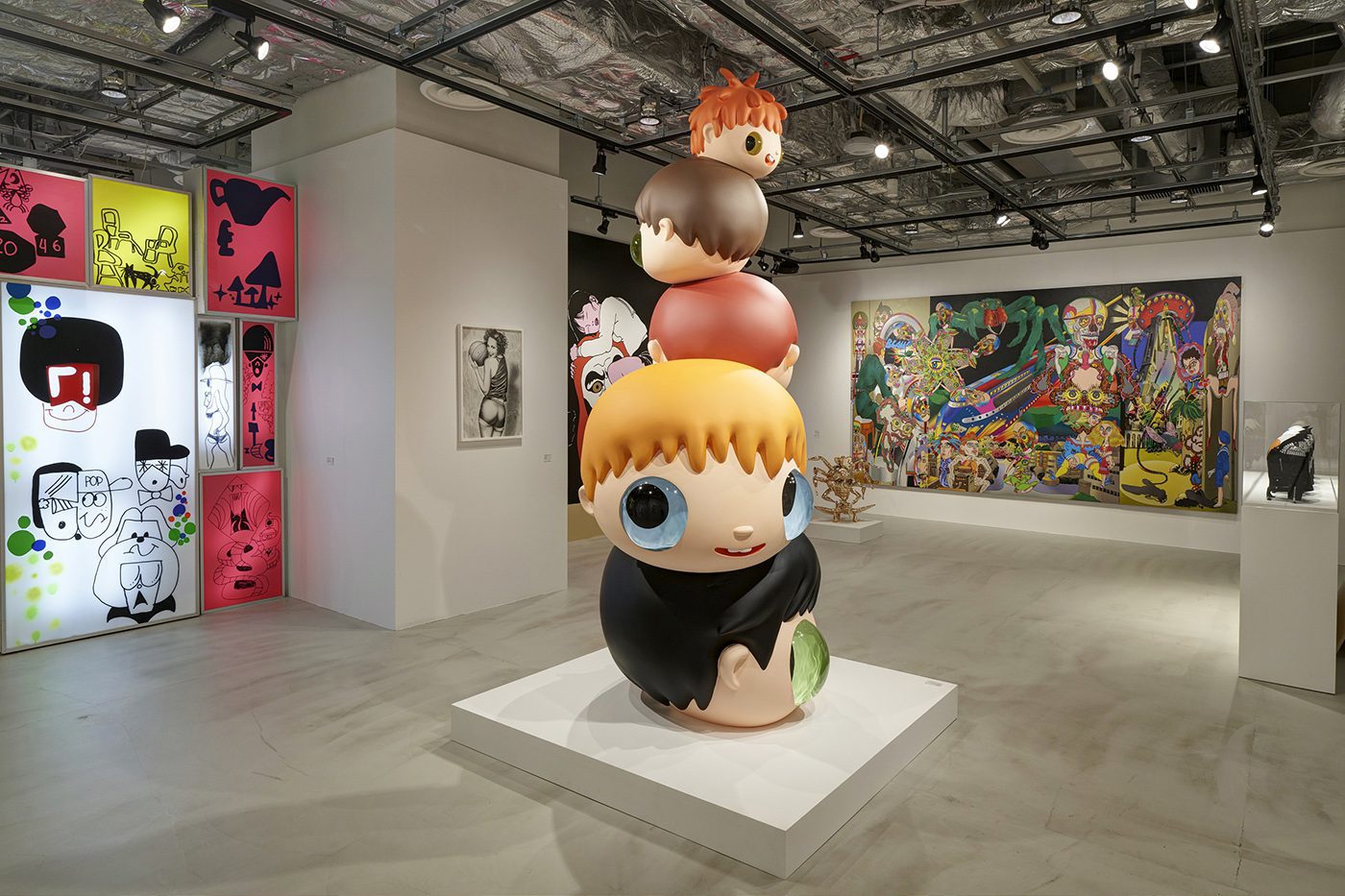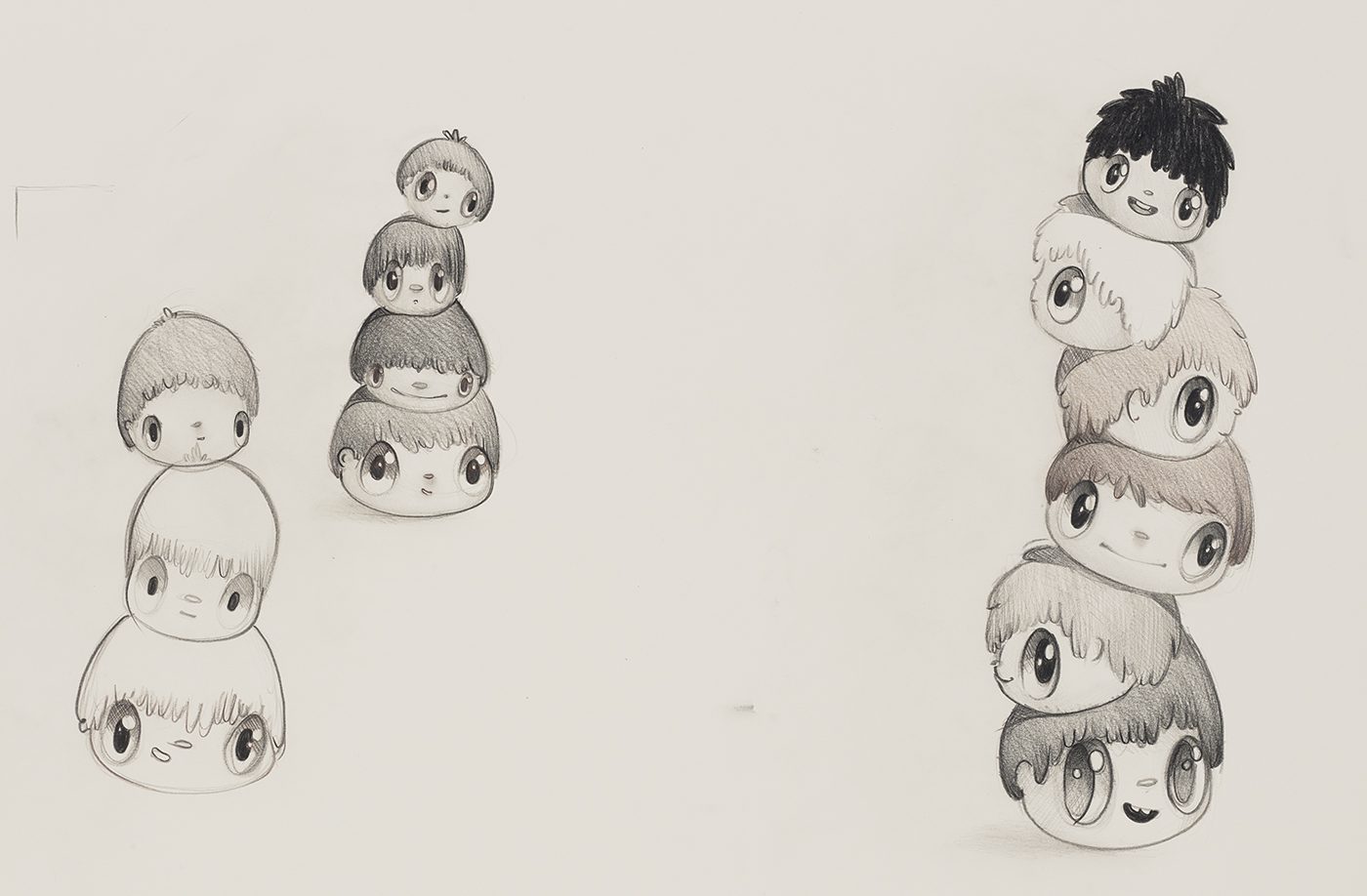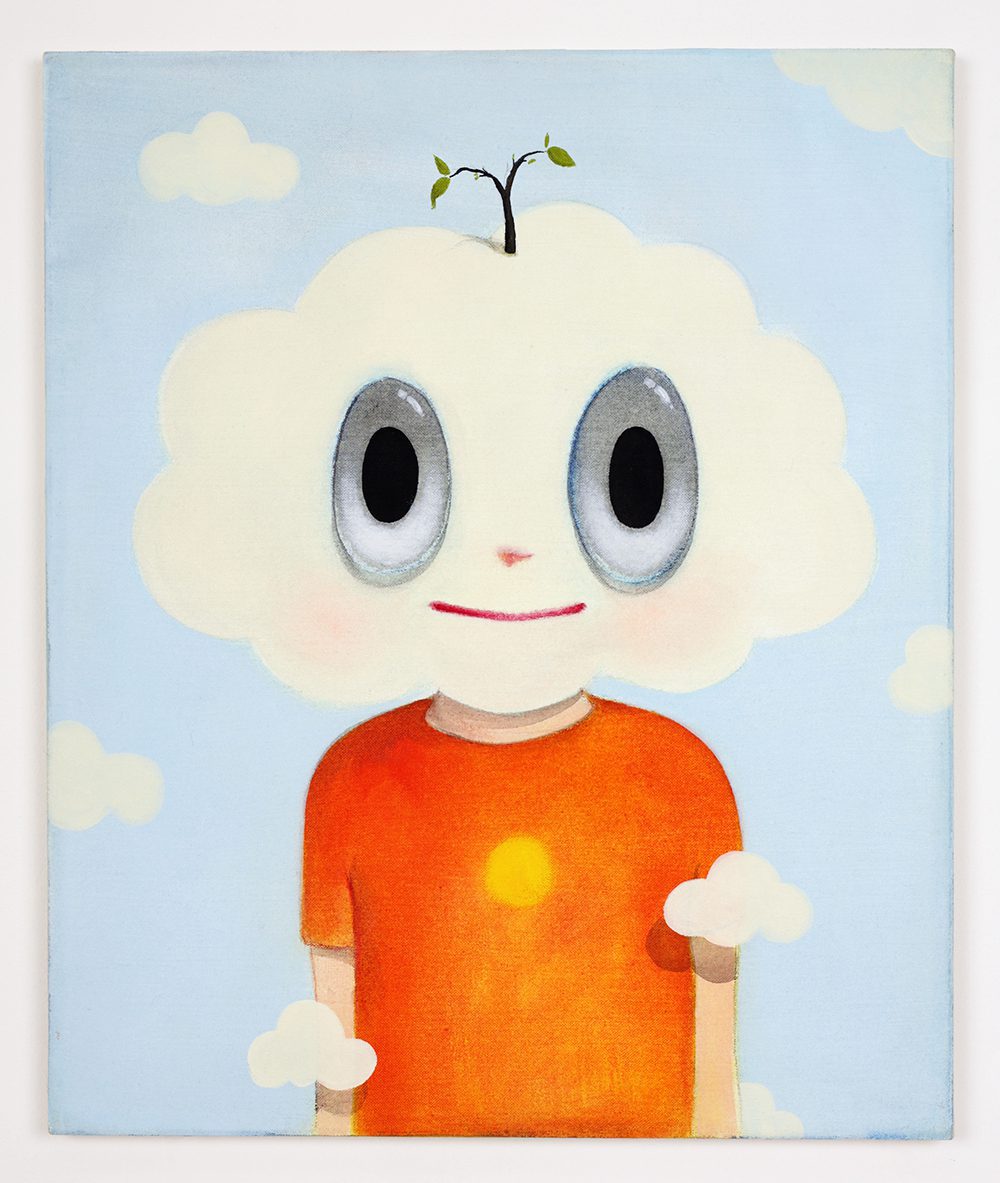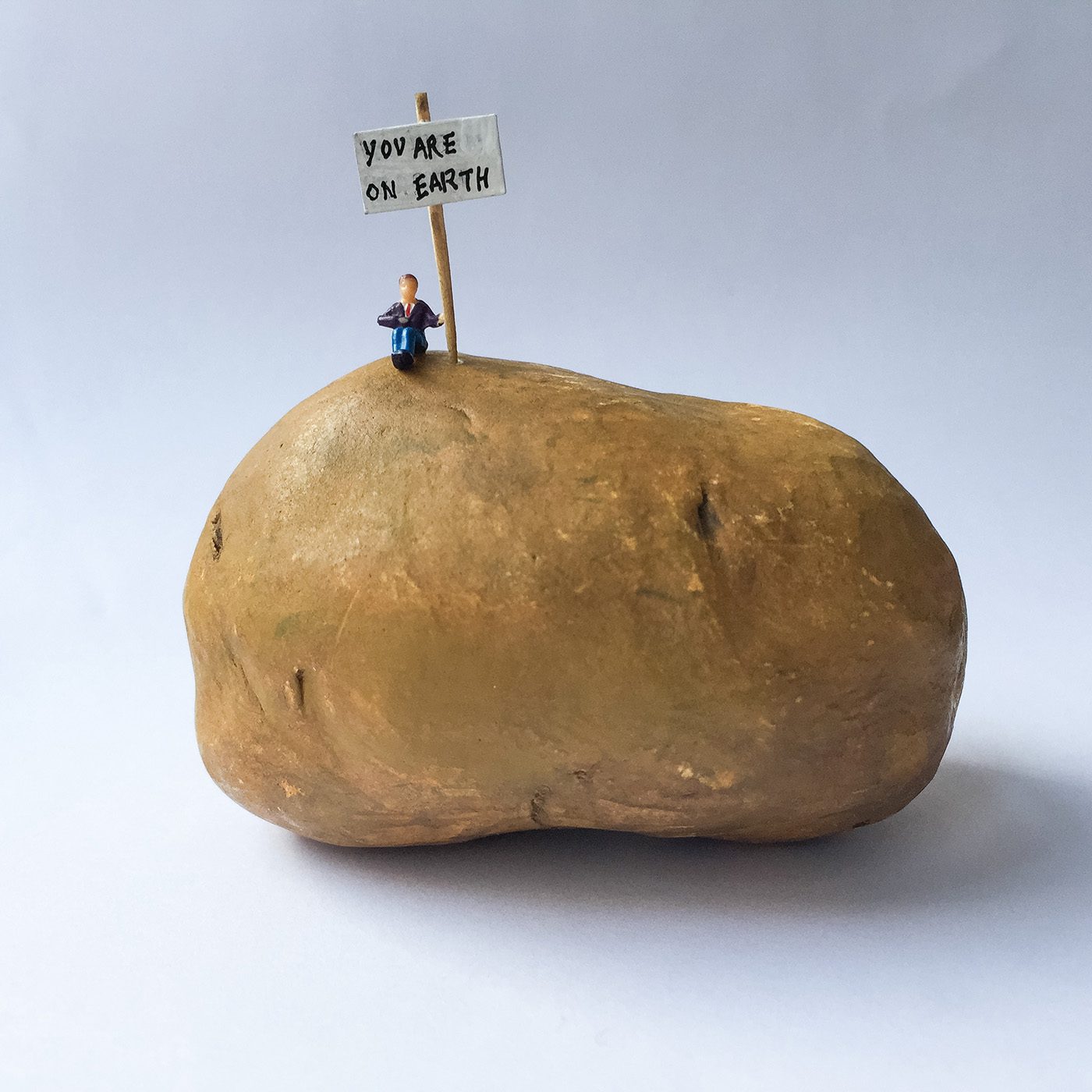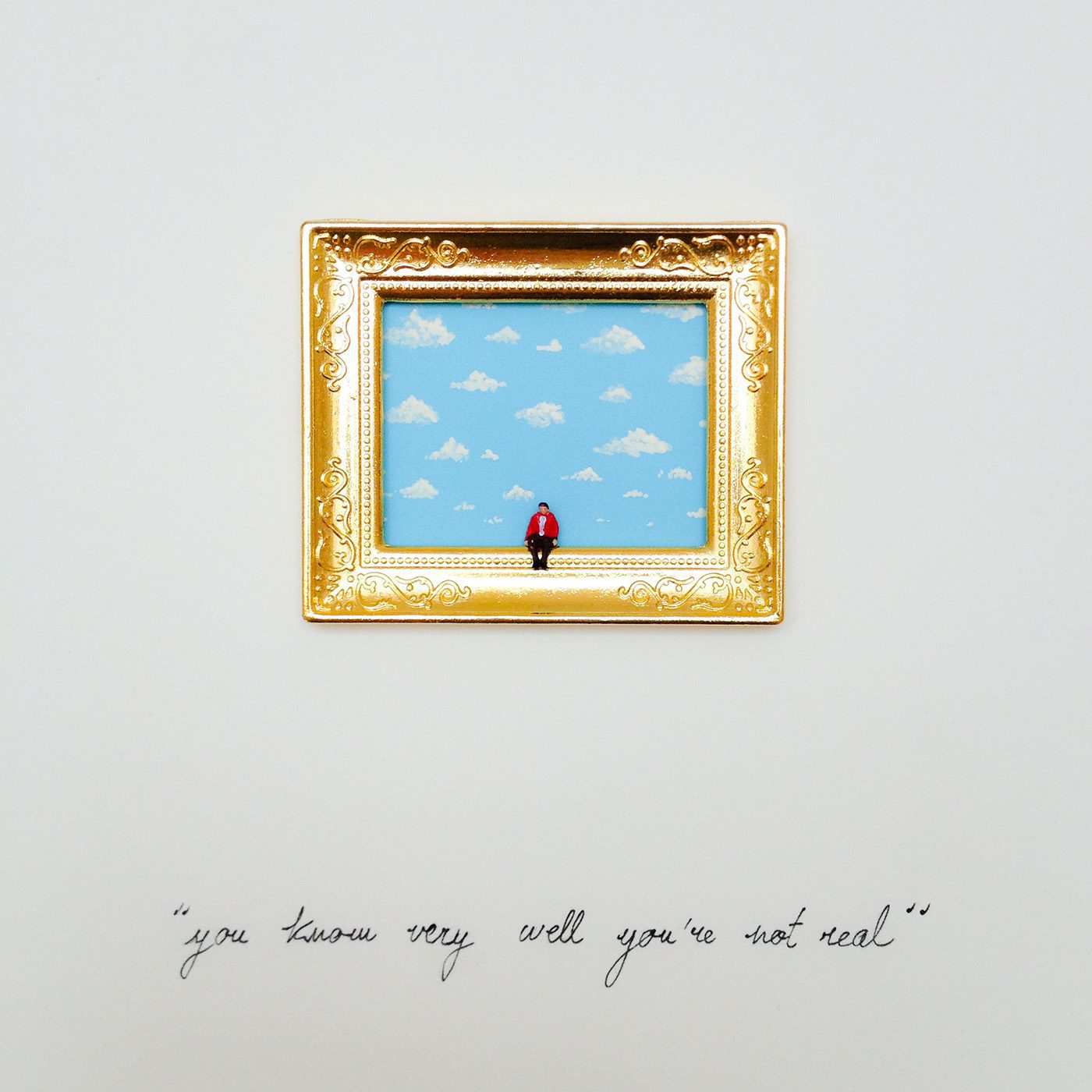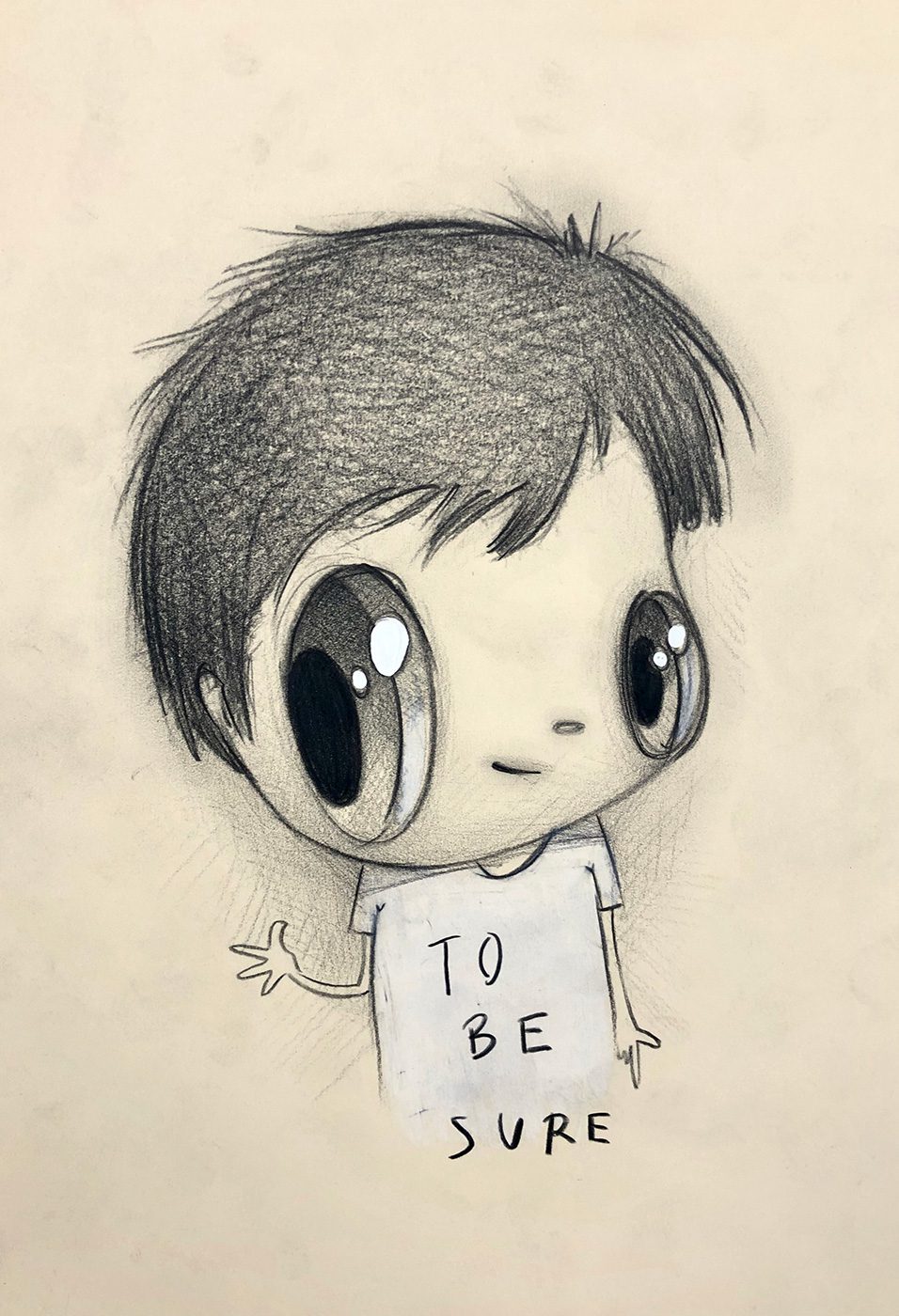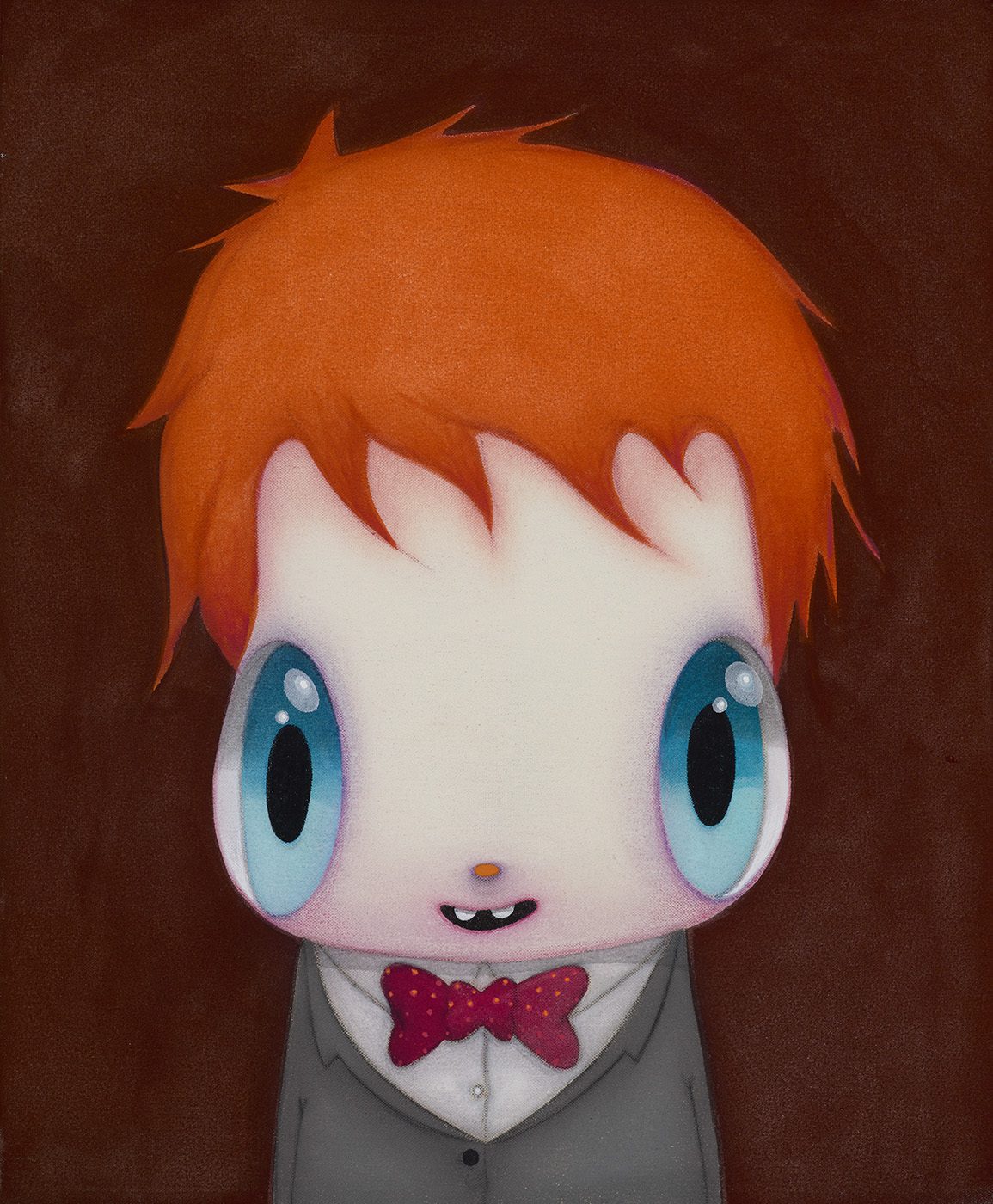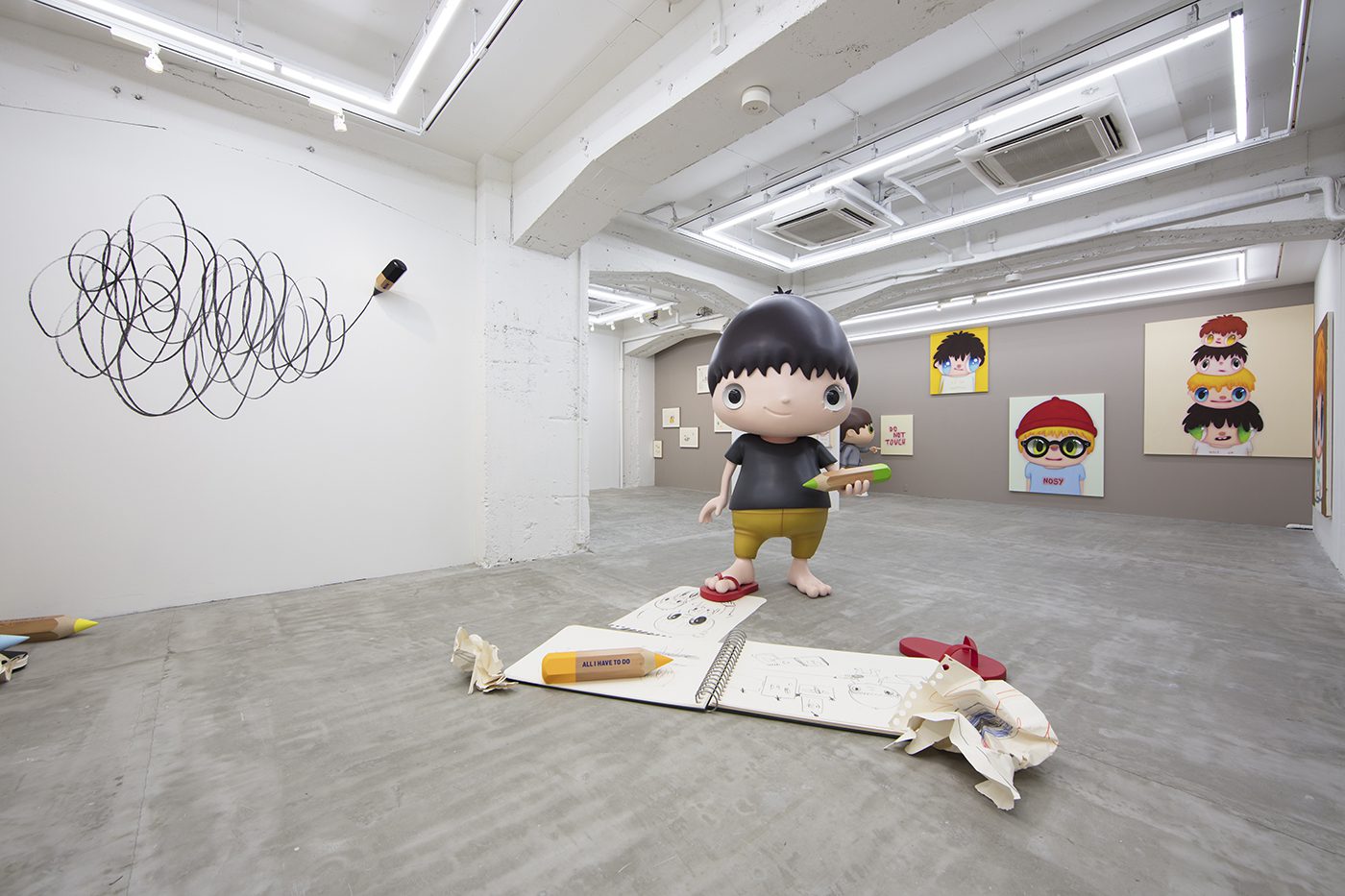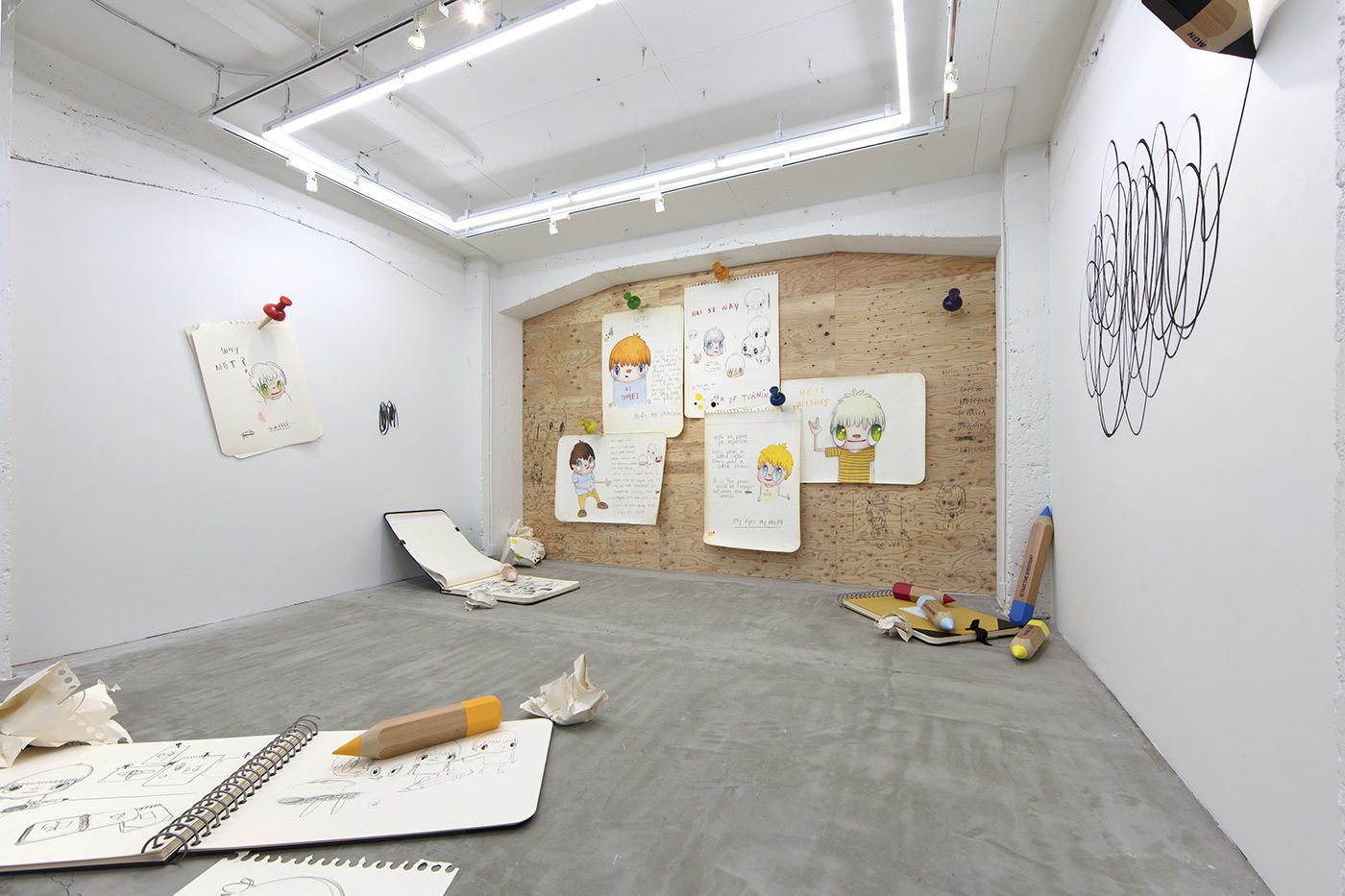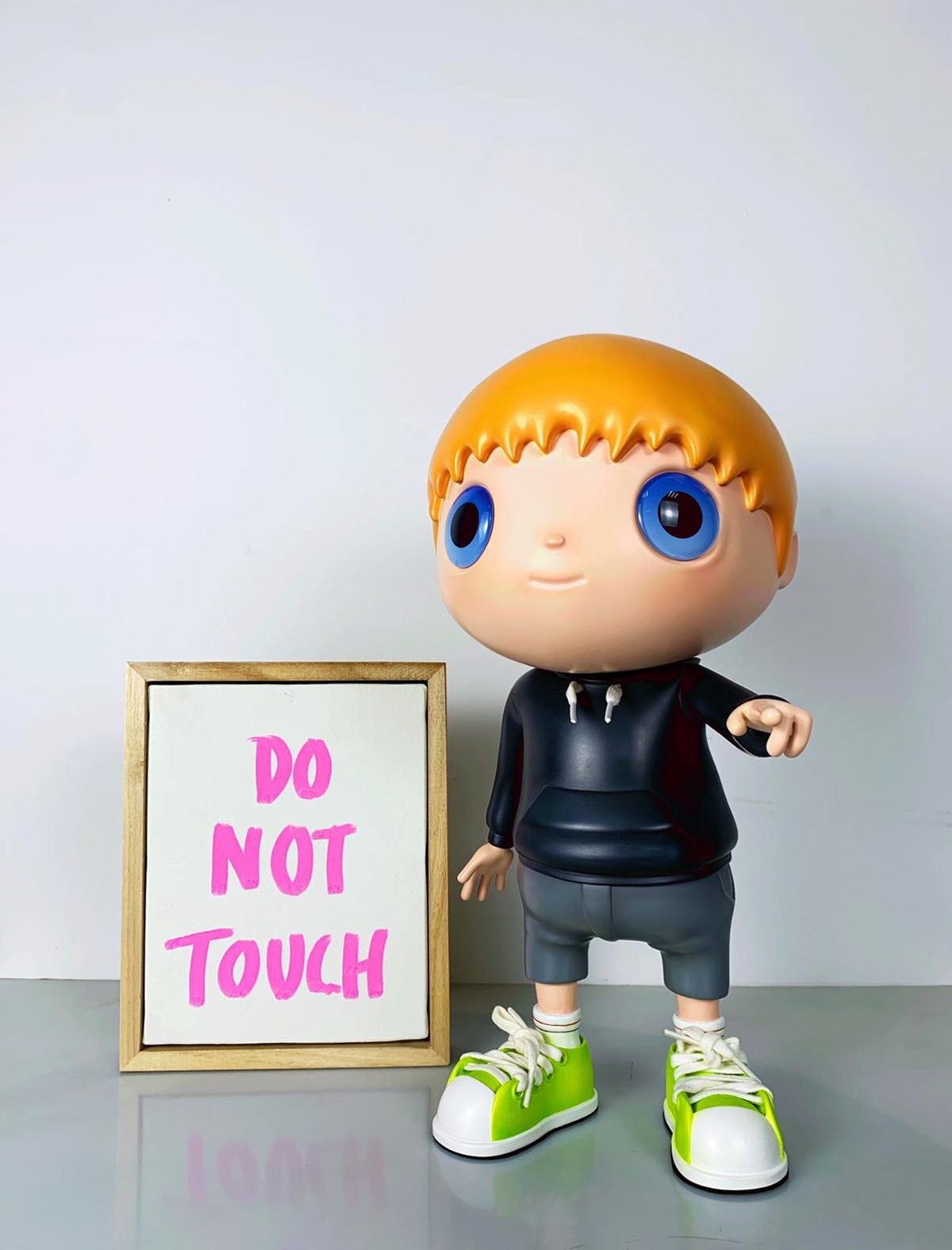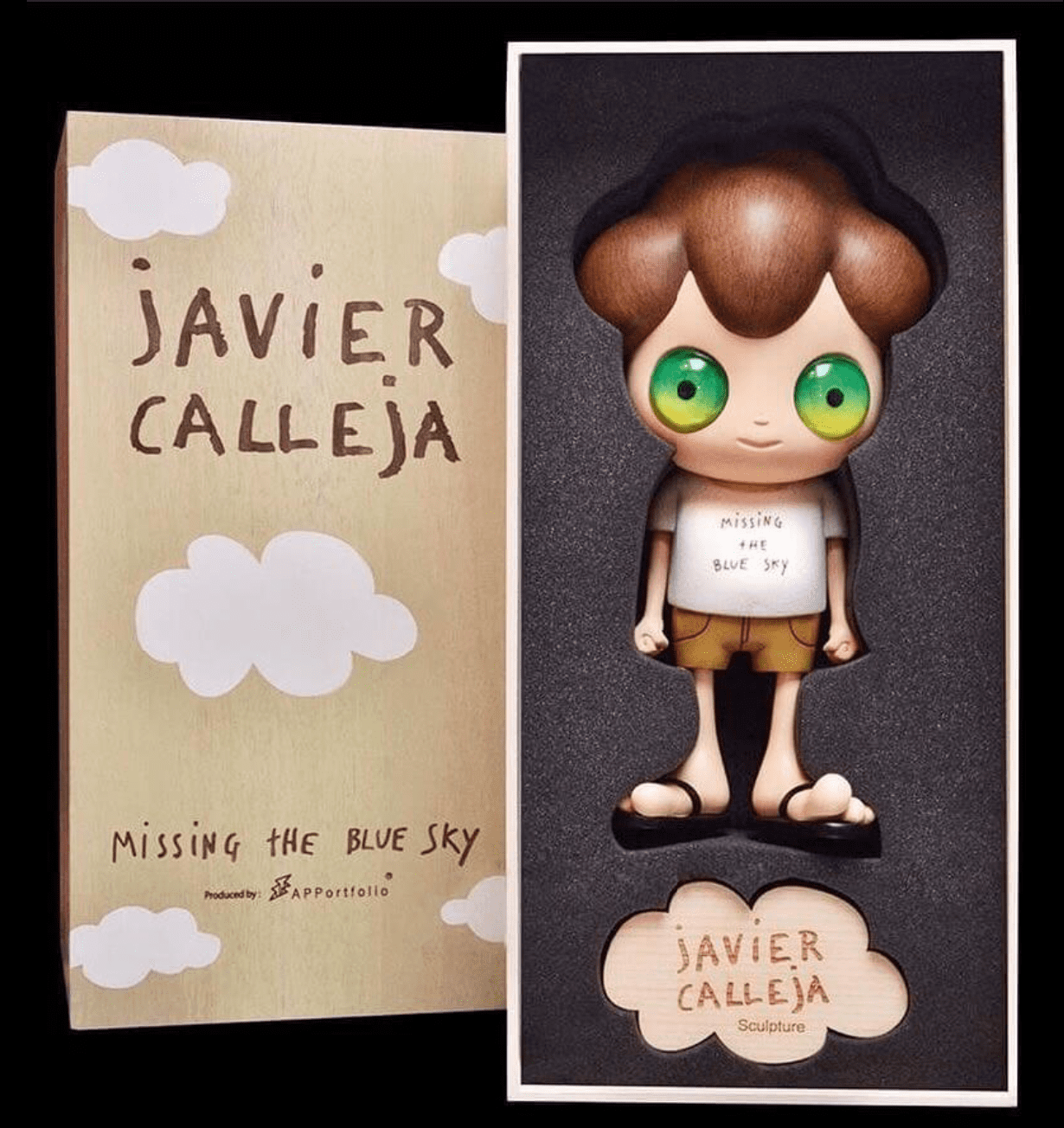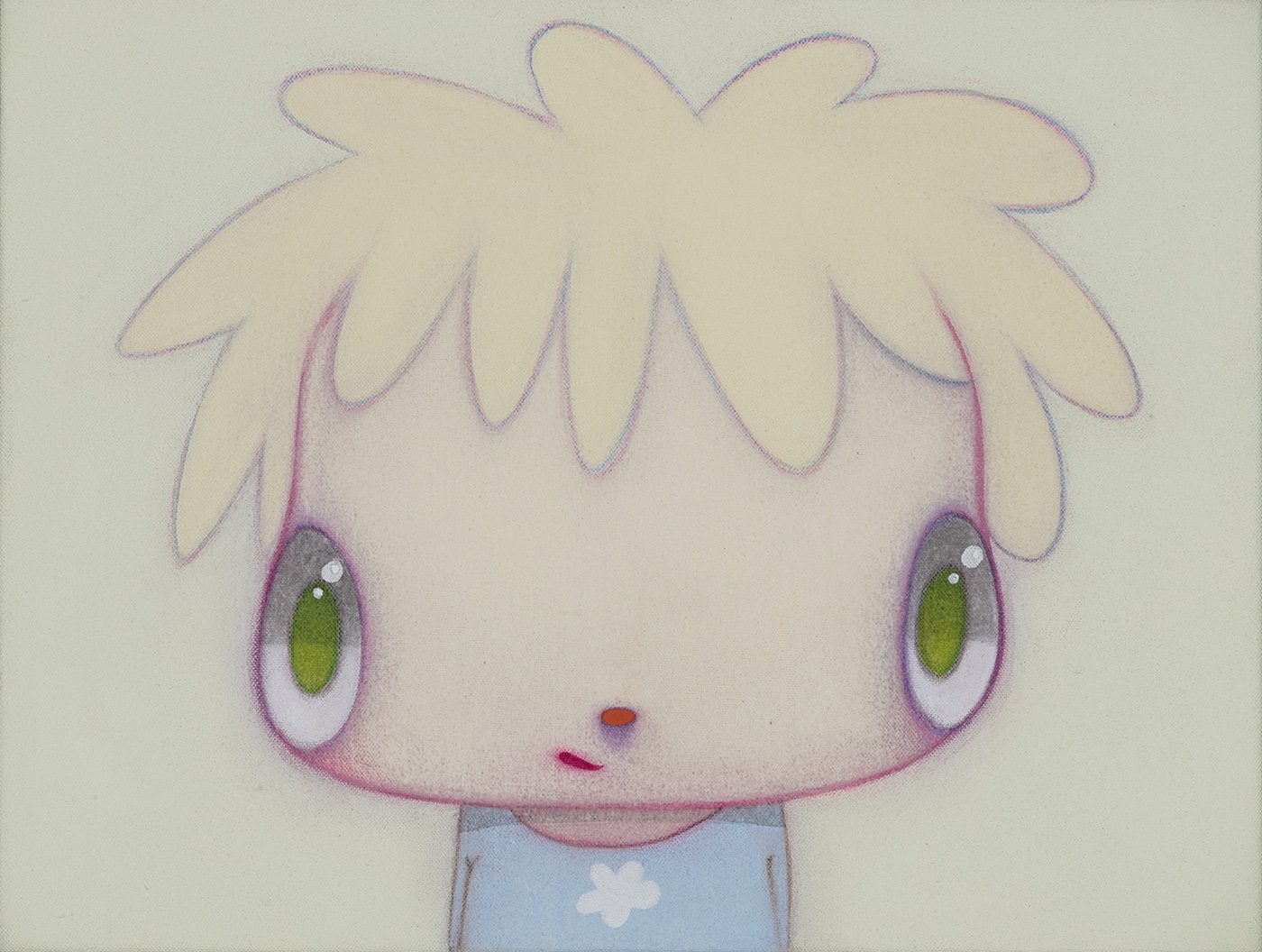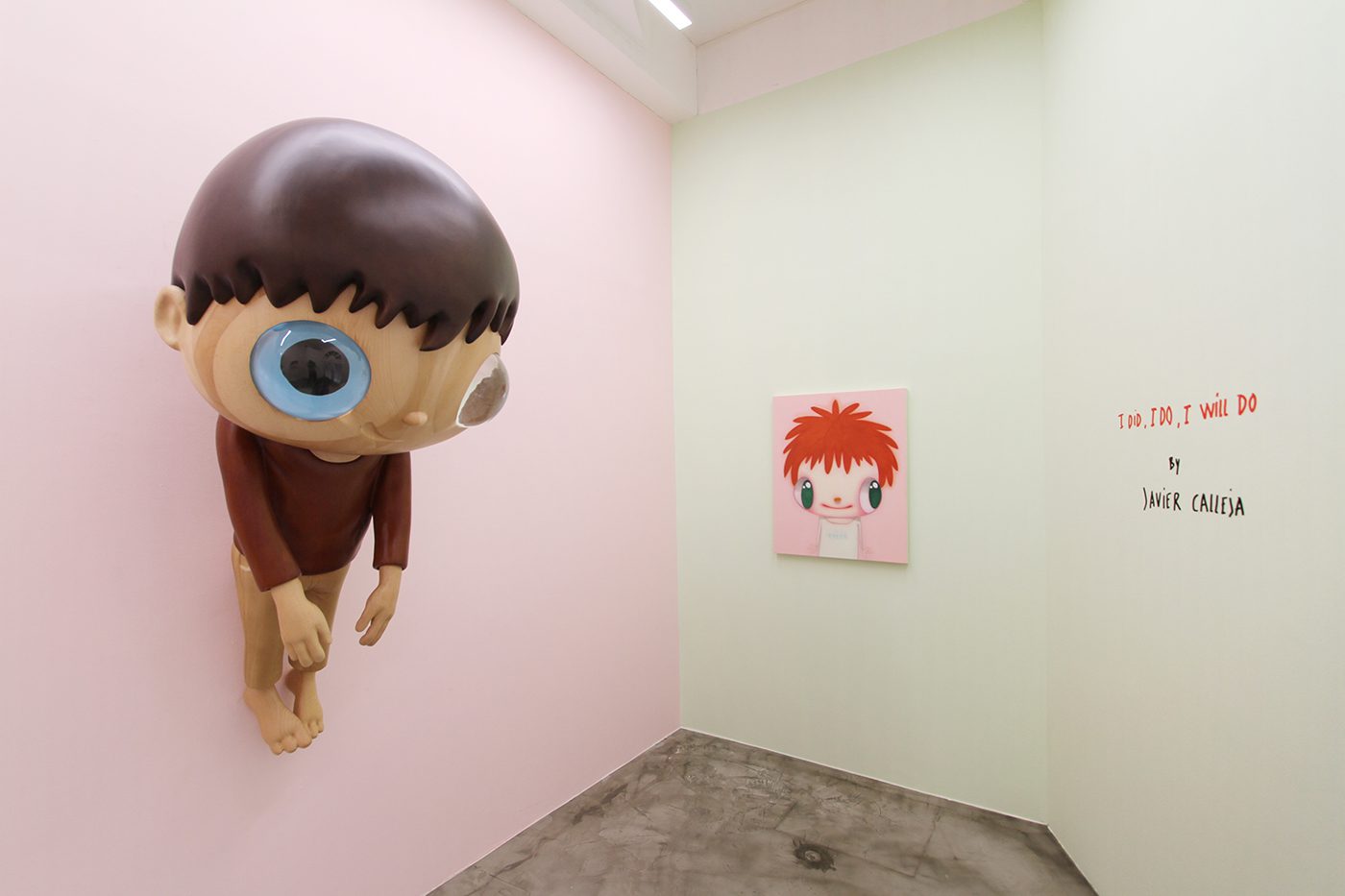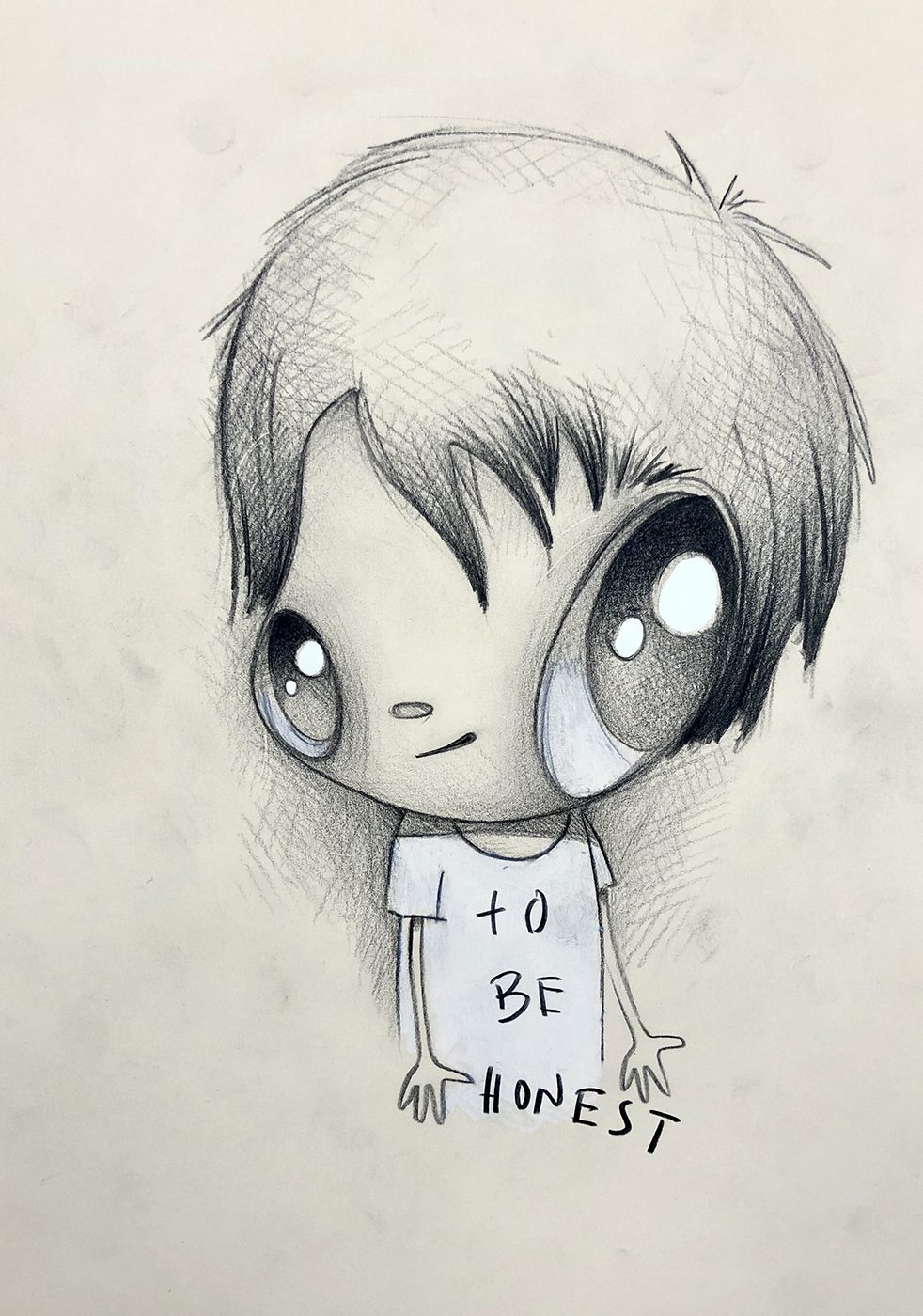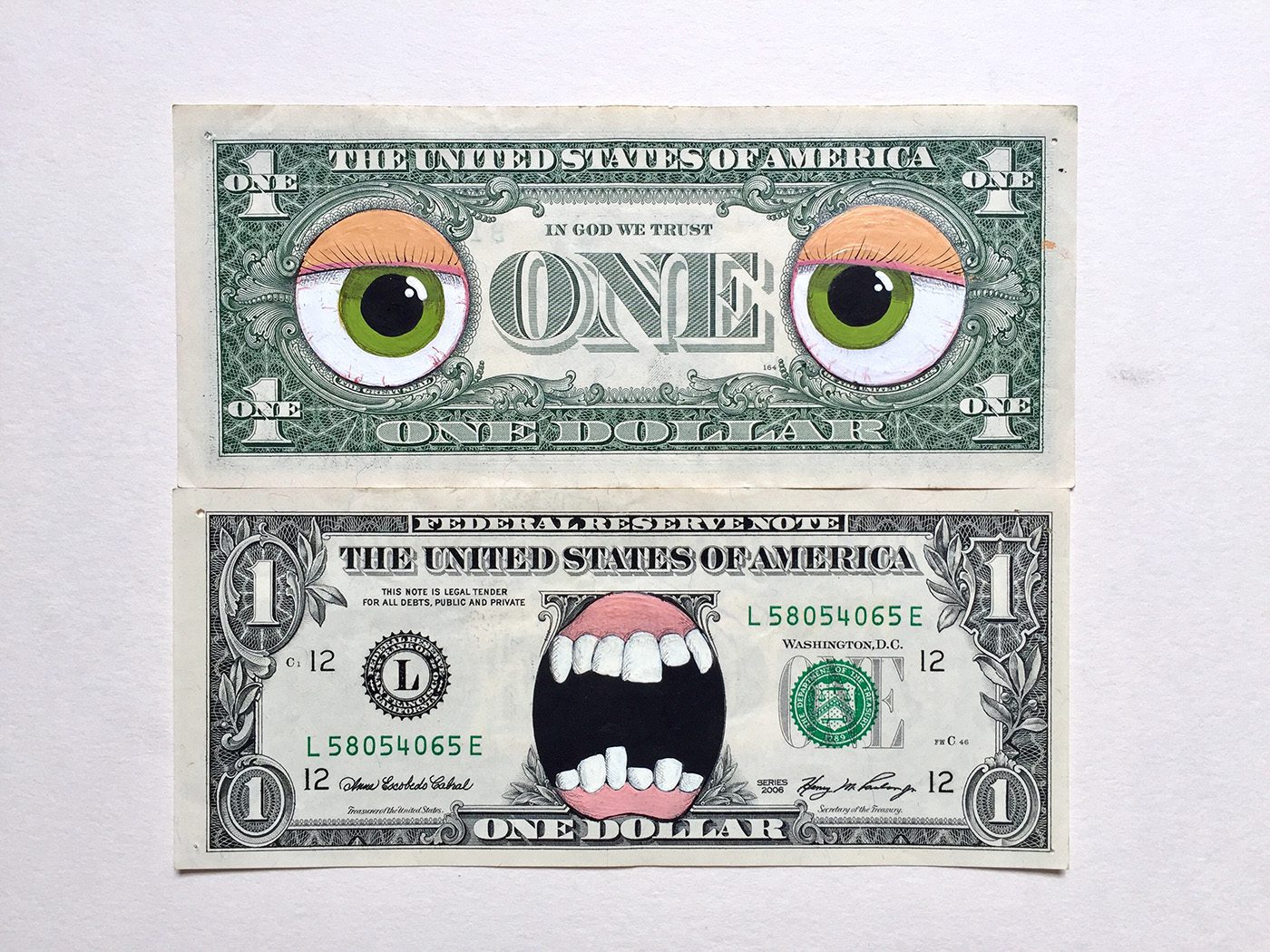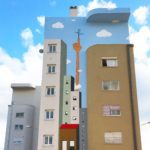Javi Calleja (Málaga, 1971) started to become recognized in the national Spanish circuit of galleries and museums with his work of “minimal sculptures”, but it has been his drawings and paintings of naïve looking children with big watery eyes that have taken him to the top. The Malaga-born artist, with a degree in Fine Arts and an enviable curriculum of exhibitions, has achieved one of the greatest goals in the art world. In one word: Asia. He took the leap in 2017 with an exhibition in Aisho Nanzuka in Hong Kong and after this first incursion the rest was just going with the flow. Calleja has thus entered the exclusive club of artists whose works disappear with the blink of an eye in a market where demand is greater than the production that he can (and wants) to cover. Without going any further, this summer his painting ‘What?’ reached the stratospheric amount of 425,000€ at Christie’s auction in its Hong Kong base.
Close, frank and passionate about his work, we speak with the Malaga-born artist in the wake of the exhibition he is about to open in Miami, take the opportunity to go through his latest years of career, his present and his future.
‘What?’
‘Sooner or Later’, 2020
September comes with a new exhibition in Miami, a project that had to be postponed precisely because of the pandemic, what are you going to present for the occasion?
We are now finishing sending everything that will go there, with the virus everything has to be well in advance. The biggest works have already been shipped. The exhibition will be at Bill Brady Gallery openning on September 25th. On the one hand, I will be showing the large scale sculpture ‘Heads’ that was on display this summer at the collective show organized by Nanzuka at the Parco Museum in Tokyo, and on the other hand, a new body of work on canvas and drawings. I’m trying out new sizes for the paintings, a 2,5m x 2m, a little bigger than what I normally do, another six large pieces. I’m now seeing if I can come up with a last minute pieces and send them out.
‘Heads’ at Nanzuka Underground this summer
‘Heads’ sculpture sketch
Nanzuka was precisely the first gallery that took you to Asia. In Spain by that time you had already shown your work at the CAB in Burgos, CAC in Malaga, Yusto/Giner also you were represented by Rafael Pérez Hernando in ARCO… But what you took to Hong Kong was something different. How was that jump that took you to the Asian market, so coveted by many artists?
Everything started with the exhibition I did at Aisho Nanzuka gallery back in 2017, the headquarters in Hong Kong of the Japanese gallery Nanzuka Underground. There I was given the opportunity to show work that I hadn’t really shown that much before, but at the same time it was something I have been developing during my career. They gave me the freedom to present the pieces as I wanted and I took a chance by deciding to promote it. I did a bet on that work.
What was that work you are referring to that put you on the spotlight in Asia?
When I had exhibitions in art centers or galleries in Spain my work was normally based on small figures or the so called ‘minimal sculptures’. They were found more interesting in these circuits, and my paintings with characters, the ones I mean and that I still do now, were accepted depending where. At that time it the idea of having to choose whether to promote one or the other art was just not in my mind, I wanted to do everything! It was in Hong Kong that I decided to bet on those drawings and paintings of big watery eyes characters. They actually are an evolution of my ‘Cloud-Head’, which I’m very fond of. The drops became the eyes so they have that watery point, the fluffy cloud became the hair… That’s how they came into what they are today. Now I’m fully dedicated to them.
‘Cloud Head’
Old works of minimal sculptures
Minimal sculptures
You seem to have found the formula and style that works for you.
It’s not a question of an algorithm or a mathematical formula that you use and candy begins to fall. I learned a lesson from a fellow artist who said “do what you feel comfortable with, because if one day you succeed with it, you will have repeat it again and again”. Now I have to do a lot of those paintings, I have a huge demand, and I want to continue the research of these works, but I do it because I like it and I don’t mind repeating it. Years ago, when I was doing the minimal sculptures, I always tried to do something different and I always came out with the same thing. Now that I try to make the same character I always come out with a different one. I’ve press the right button but it’s not that I’m digging into a gold mine that I’ve found, I just have fun doing this and I feel like continuing to paint it, my hand goes away by itself. Of course, selling helps. Picasso said “I don’t look, I find”, and I think he was wrong: you look and you find, you have to be in an attitude of finding.
Was Asia something you were looking for? How did it come to you?
I think social networks were quite important, I’ve always been an anti social network person and it wasn’t until I opened them up that I realized how many people your work can reach and the acceptance I was getting. Until that moment I was only known on the national circuit, art centers, galleries… and from then on I became known internationally. This opened the doors for people from Asia to look at my work and get an opportunity on the other side of the world. Then you have to know how to take advantage of it. I’ve been ‘lucky’ to get this opportunity after twenty-five years of work.
‘To Be Sure’, 2020
‘The Doctor’, 2020, acrylic on linen
How does your love affair with Asia continue?
The first Hong Kong exhibition went really well and from there on it just kept rolling. I was offered to exhibit at the Nanzuka gallery in Tokyo and that’s when we decided to get down to work on the first sculpture. It was the first big exhibition there and we decided to do not one, but two sculptures. It went really good again and we realized that sculpture is a field to be investigated. During my career I have worked a lot with installations, I had already made that jump into 3D but in a very small scale. Before I did not have the economic possibilities to make something bigger. Now we have galleries that give us the opportunity to produce them and I have a team of people who support me in the whole production process.
Nanzuka Underground exhibition, 2018
‘Do Not Touch’ instalation at Nanzuka Underground, 2018
Has the entry into this market made you take new directions due to the specific taste of the Asian society?
The Asian market, and specifically its collector, does not need a long explanation when it comes to understanding an artwork. In Europe, because the American market is more similar to the Asian, behind a painting there is almost always a long explanation, we want to know what’s behind it. In Asia the collector doesn’t need that. They have a saying that goes “whoever does not understand a look, will never understand a long explanation”. The artwork enters through the eyes, through the emotion. They get excited when they see a work and they feel they become part of it, maybe that is why my work is accepted there. This is for the good and for the bad: if the Asian buyer doesn’t like it at first sight, they won’t care if you explain the meaning behind it. That’s why it’s said that it’s such a difficult market that sometimes it’s confused with something banal because they don’t need an artwork to have anything else.
At what stage are you right now?
I’m just where I want to be. I feel good in any of the disciplines I’m working on, I love painting, I like drawing… Now my main goal is that the production goes as I want it to go, I don’t want an excess of production because the market needs it or demands it. Right now the market is asking me for a lot of work and I don’t want to feel obliged to give it what it wants. It is true that there is a part of my work that can be taken to merchandising, to toy editions… But it doesn’t mean that I want to make twenty editions every year even if I have a market that will buy it. I don’t want to paint without knowing what I’m painting.
‘Do Not Touch’, color edition, 2020
‘Missing the Blue Sky’ toy
Do you have assistants in the studio that help you out?
No, at the moment I don’t have assistants painting and this is the limit of work I want to reach. When it comes to making sculptures or editions, I do have a team, and an office. In Calleja Studio, I have a five people team that manage absolutely everything and are the ones who make it possible for me to devote myself to painting. I keep the painting and drawing to myself. I want to enjoy that solitude, the moment of painting, do it with my hand.
Your paintings have become very exclusive objects…
It’s because of this that some time ago I decided to start making paper editions or toys. In the next projects we are looking at the possibility of working with open editions (they are usually numbered) so that my work can reach more people. Many times people are left without work, and exclusivity is fine, but there is no need to rejoice in that, I do my work so that it reaches the public and I don’t want to be the one who puts obstacles in the way.
Where does inspiration come from for the naive-looking children in your work?
It’s a matter of twenty-five years of profession. I was one of these children who spent all my school hours drawing and doodling. Many people say the paintings come from manga, I say they come from Ibañez [Spanish cartoonist]. Actually from a mixture between Mazinger-Z and Ibáñez, let’s say. Heidi, Marco… All these characters left their mark on me. Then they tell me that my work looks Japanese, but many of us have grown up with Japanese cartoons. It’s in my DNA, why shouldn’t I be able to use it in my work?
‘Cloud’, at ARCO with Rafael Pérez Hernando gallery, 2020
‘I did, I do, I will do’, installation at Aisho Nanzuka, 2019
I imagine that’s where the controversial comparative with the work of the Japanese Yoshimoto Nara comes from. You’ve always talked openly and in a very frank way about it. You even identify more with the work of Barry McGee. What is there of other artists in your work?
You don’t have to be very smart to see Nara in my work, but you have to be really dumb to see only Nara in it. In my work of course there are all the artists that have gone through my life. Barry McGee, Nara, Philip Guston… I believe that this last one is precisely in the work of all the previous ones. All of them make up my work and I am very much against the idea that because someone does something it can no longer be done. From my point of view this is a burden of conceptualism, where the idea is so important that anyone else who takes it is already copying it. Nara got there first, I’m very frank about that, but I find it funny that people don’t like my work because it looks like someone else’s.
Who do you consider your influences nowadays?
I can tell you hundreds of artists because you get a bit out of everyone. From a classic Picasso to a Richard Serra, even Tony Cragg. I also love David Shrigley, Chris Johanson… I’m lucky that I can start collecting some of their work.
Drawing ‘To Be Honest’, 2020
‘Dollars’, 2010
I wanted to get there, you are an artist and also a collector. How did you get into that world?
We’ve been collecting for about four or five years now, but basically since I started to have some money to buy. I never thought I would be a collector, but you start to buy, you get excited, and you start to realize that you buy one, you buy another and you want to keep adding up. In the same way that there are people who collect me, I like to think that I can invest that money and make it stay in the art, it is a way of generating a chain.
What are your latest acquisitions?
Lately we have bought young artists like the Spanish Ana Barriga, Julio Anaya, Imon Boy, the Serbian Maja Djordjevic… Also I try to collect from my hometown Málaga, we have many artists such as José Medina, Paloma de la Cruz, Julio Anaya he is also from Málaga. At the end you go to the exhibition of a friend and you buy a piece as we did with Cyro García, Verónica Ruth Frías, the Valverde brothers… Other international artists like Mark Ryden, Tim Biskup or Marion Peck are also in our collection. It is true that I have a strong link to urban art, but in the end I like to buy a little bit of everything, which ever piece I like.
Do you feel identified with urban art?
There was a time where a very interesting movement was being generated in which urban art, pop art, the low-brow circuit and even illustration was also involved. I felt identified with it, I liked it. Street Art seems to me a very different and interesting art, sometimes what you had to see was very boring and it’s not every day that you want to go to exhibitions with your reading glasses and a notebook. It was an art that breathed freshness. For a while I thought that I was going to dedicate myself to it, but I realized that I am not good at it. I come from the world of drawing, from the faculty of Fine Arts. But I soon discovered that there was an artist who I admired so much, who came from the street and had perfectly integrated his work into museum or gallery circuits. It was Barry McGee. Even later KAWS. I respect him a lot, but this thing of going into the streets to do murals is not my thing.
Mural in Málaga by Javi Calleja
Besides Miami this month, what projects are coming up in the next few months?
After Miami I have an exhibition in China. In Shnghai I will be participating at the ART21 fair and in November I’m going to Tokyo. Art Basel Miami is coming in December, which has just been cancelled, but it will probably remain online. I’m forgetting something for sure!
Any work coming up in the public space?
I would love to make much larger and more monumental sculptures and we have a project next year at the Parco Museum in Tokyo where we could possibly do a sculpture in the street. These are things that are not 100% defined but I am happy because 2021 comes with a lot of sculptures that you see and you say “Wow! What a cool thing to do!” I’d show you the sketches but I can’t make any headway with the projects… Soon more!

